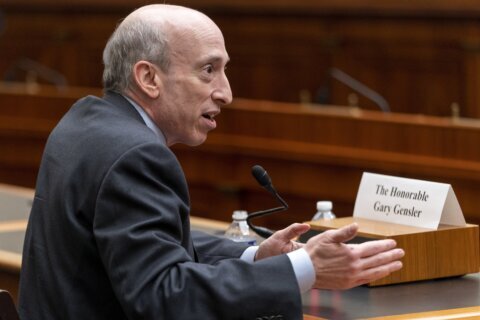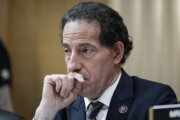Not long after Edwin Moses figured out how to attack the solution to track’s ultimate math problem, he transformed himself into the best hurdler in history.
That, in turn, gave the engineer-turned-Olympic champion the platform to go after more difficult issues that, even today, more than 40 years later, nobody has totally untangled.
The title to a new documentary on Moses, “13 Steps,” pays homage to the then-revolutionary number of strides the track star took between the 10 barriers in the notoriously painful 400-meter hurdles — a race where he lined up 122 straight times over a span of 9 years, 9 months and 9 days without getting beat.
“Everyone’s angry about something, but what can you do and what are you going to do?” Moses says in the movie, reflecting on the larger-than-sports role he assumed after becoming one of track’s brightest lights in the 1970s and ’80s.
The film, which debuts to the public Saturday at his alma mater, Morehouse College, dissects Moses’ role in three causes that remain unresolved: fair pay for athletes in track and the Olympics; doping; and racial equality in America.
Moses knew he could not replicate Tommie Smith and John Carlos
Born in 1955, Moses was 13 when Tommie Smith and John Carlos raised their fists on the medal stand at the Mexico City Olympics, gestures that made them pariahs for decades both inside the Olympic movement and out.
Those lessons put the world’s best hurdler in no position to follow suit when he won in 1976. Some tried to portray his victory lap in Montreal with his white American teammate, Mike Shine, as something bigger, but as Moses says in an interview shortly after those Olympics, he simply viewed it as a spur-of-the-moment burst of un-symbolic happiness.
Still, “13 Steps” depicts race as playing a sizable role in many of Moses’ biggest life decisions, including his enrollment at Morehouse, a historically Black college in Atlanta. Interviews with fellow alums Spike Lee and Samuel L. Jackson, along with a who’s-who of Olympians, sports lawyers, childhood friends and even celebrity astrophysicist Neil deGrasse Tyson, knit together Moses’ story.
A troubling episode makes the final cut of “13 Steps”
German filmmaker Leopold Hoesch, who has done documentaries on everyone from Snoop Dogg to King Charles, tapped into hours of archival footage from on and off the track, including newsreel clips from Moses’ arrest on charges of soliciting a prostitute on the Sunset Strip in the 1980s.
Moses insisted he was framed by a corrupt LA Police Department, so he fought that case all the way through the court system and won. He had no issues with the placement of that potentially reputation-altering and now all-but-forgotten episode in the movie “because it happened, and you can’t un-remember things like that.”
“I had to go on the witness stand and testify against seven police officers who are all lying and the jury has to believe all of them or you,” Moses said in an interview with The Associated Press. “That was the most poignant part of the case, the fact I had to go through that.”
The movie also documents Moses’ activist role in the anti-doping space, a world that has made vast strides but, in some ways, is every bit as damnable today as when Ben Johnson spawned the modern-day movement with his notorious positive test for steroids at the 1988 Seoul Olympics.
First struggle was for fair pay and professionalism
Before that, Moses spent a career trying to get himself and his rivals paid.
He recalls his first paid race — a $600 appearance in Kingston, Jamaica, in 1977. Then, years later, as he prepared for a race in Cologne, Germany, where a crowd of 60,000 was expected, a light went off.
Why was everyone but the athletes making money?
“It didn’t make sense. I was a radical from the very beginning. If we didn’t get what we deserved, we just didn’t run,” Moses says in the movie.
Track fans who watch this film might recoil at the sad fact that some of the appearance fees Moses and his peers received toward the end of their careers are around the same as what some runners get today.
At least they get something. The movie argues they probably have Moses to thank for at least some of it.
Moses turned a math problem into success in the hurdles
Long before he made himself famous, Moses — who was building a career in aerospace engineering alongside his track success — did the math and deduced that those who ran tightest to the inside line on the track could save fractions of seconds by shaving off between 12 and 20 feet from their path around the oval.
Doing that required him to take off over the barriers off his left foot. The movie explains how Moses went about putting the plan into action by taking 13 steps between hurdles where most had taken 14 or 15 and jumped off their right foot.
“He literally changed the sport in a year,” renowned coach Bobby Kersee says in the film.
That, as the rest of the movie shows, turned out to be the easy part.
___
AP Summer Olympics: https://apnews.com/hub/2024-paris-olympic-games
Copyright © 2024 The Associated Press. All rights reserved. This material may not be published, broadcast, written or redistributed.







